This article was co-authored by Lauren Baker, DVM, PhD. Dr. Lauren Baker is a Veterinarian and Assistant Scientist at the University of Wisconsin-Madison. With over 10 years in veterinary medicine, she specializes in the concept of “one health,” which uses insights from veterinary medicine to help human medical research. She holds a Ph.D. in Comparative Biomedical Sciences, a Doctor of Veterinary Medicine, an MS in Comparative Biomedical Sciences, and a Bachelor’s degree in Psychology from the University of Wisconsin-Madison.
There are 11 references cited in this article, which can be found at the bottom of the page.
wikiHow marks an article as reader-approved once it receives enough positive feedback. In this case, 96% of readers who voted found the article helpful, earning it our reader-approved status.
This article has been viewed 106,920 times.
Every responsible cat owner should worm their cat regularly. However, what many owners do not realize is that cats can be infected with two different species of worms: roundworms and tapeworms. If you think your cat has tapeworms, make an appointment with your vet to get your cat the proper medication.
Steps
Identifying Tapeworm in Cats
-
1Understand what tapeworms are. As the name suggests, tapeworms are long flat worms. They can reach up to 30cm in length and are a creamy-white color with flat segments along their length.[1]
- The tapeworms attach firmly to the lining of the bowel wall, so it is unusual to see an adult worm unless the cat has had a worming treatment.
- It's much more common to see tapeworm egg packets on the cat's fur, especially near the anus.
-
2Look for white, rice-like objects in the cat's fur. When a tapeworm reproduces it fills special segments, called proglottids, which contain thousands of tiny eggs.[2]
- The adult tapeworms shed these egg packets into the bowel lumen where they migrate out of the cat's anus.
- The proglottids are about the size of a grain of rice and a similar shape. If you see a white rice-like object on the cat's fur then it is highly likely he has tapeworms.
Advertisement -
3Bring a sample to the vet for testing. If in doubt, stick the egg packet to a piece of sellotape (tear of a 6 inch length of sticky tape, and touch the adhesive side to the object, then stick the tape to a piece of card) to show to your veterinarian.
-
4Know that a cat with a flea infestation is highly likely to have tapeworms. There are two types of tapeworm that commonly infect the cat, and these tapeworms have different intermediate hosts. Dipylidium caninum (the most common cat tapeworm) uses fleas as its go-between.[3]
- Cats with fleas are likely to develop tapeworm as immature fleas feed on tapeworm eggs in cat feces. The tapeworm hatches and develops inside the flea (the intermediate host), and when the cat grooms and swallows the flea, her digestive juices crack open the fleas body and release the larval form of the tapeworms.
- Thus, regular flea control is essential to prevent and control tapeworm in the cat.
-
5Understand that hunting cats are more likely to develop tapeworm. The second most common tapeworm, Taenia taeniaeformis, develops its larval stage inside rodents such as rats and mice. Therefore, hunting cats are more likely to be infected with this type of tapeworm.[4]
- Rodents infect themselves with the larval form of tapeworm when they eat plants contaminated by cat feces containing tapeworm eggs. The tapeworm burrows into the rodents muscles and when the cat hunts and eats the infected rodent, it will infect itself with tapeworm.
- Thus, hunting cats need to be wormed regularly, ideally every 3-6 months.
Treating Tapeworm
-
1Take your cat to the vet. If possible, bring a sample of the rice-like proglottids that you found in your cat's fur. This will help your vet determine which type of tapeworm your cat has contracted. Your vet will prescribe a tapeworm product that contains the ingredient praziquantel.[5]
- While treatment is the same no matter what type of tapeworm has infected your cat, knowing which type will help your vet give you advice about how to prevent future infections.
- Praziquantel is the only ingredient that can kill tapeworms, but many tapeworm products are combined with another ingredient that works against roundworms as well.
-
2Understand how praziquantel works. Praziquantel paralyzes the tapeworm, causing it to release its grip on the bowel wall. The dead worm is then passed out through the feces.[6]
- Praziquantel causes paralysis by making the phospholipid integument (skin) of the tapeworm permeable to sodium, potassium, and calcium ions.
- A massive influx of calcium ions paralyses the tapeworm's primitive nerve system, so the worm's suckers let go of the bowel wall and it is passed out.[7]
-
3Identify some products that contain praziquantel. For many years the only products containing praziquantel were Drontal tablets and the Droncit injection. However, other products are now available including Milbemax tablets, and a spot-on product, Profender, which is applied to the skin on the back of the cat's neck.[8] A summary of these products is listed below:
- Droncit injection: Contains praziquantel and is solely effective against tapeworms (no efficacy against roundworms).
- Drontal tablets: Contains praziquantel against tapeworm and pyrantel which is effective against roundworms
- Milbemax tablets: Contains praziquantel against tapeworm and milbemycin against roundworms.
- Profender spot-on: Contains praziquantel against tapeworm and emodepside against roundworms.
-
4Follow your veterinarian's instructions for administering the medication. Approximately 2% of cats have mild side effects after oral dosing, which include sickness, diarrhea, or reduced appetite. If your cat appears to be experiencing side effects, call your vet immediately.[9]
- The tapeworm medication will kill the tapeworms present in the cat at the time of dosing, but has no lingering effect should the cat re-infect itself the following day.[10]
Preventing Tapeworm
-
1Prevent your cat from hunting. Hunting and eating vermin is a source of tapeworm infection, and stopping a cat from hunting is an excellent way of preventing infection with the taenia species of tapeworm.[11]
-
2Treat your cat for fleas. The other source of infection are fleas. The cat and all other animals in the household should be treated with an effective product as directed on the manufacturer's guidelines.[12]
- There are many products available, but those proven to be the most effective are those containing fipronil (Frontline, Frontline Plus, and Efipro) as well as selamectin (Revolutions US, Stronghold UK,).
-
3Treat your cat against tapeworm every 1 to 12 months. It is commonly recommended that you treat your cat every 1-3 months,[13] but depending on your cat's health and lifestyle, you may only need to treat your cat every 4-12 months instead. Ask your vet for specifics based on your cat's needs and the dewormers available in your area.
Expert Q&A
-
QuestionCan cat tapeworms infect humans?
 Pippa Elliott, MRCVSDr. Elliott, BVMS, MRCVS is a veterinarian with over 30 years of experience in veterinary surgery and companion animal practice. She graduated from the University of Glasgow in 1987 with a degree in veterinary medicine and surgery. She has worked at the same animal clinic in her hometown for over 20 years.
Pippa Elliott, MRCVSDr. Elliott, BVMS, MRCVS is a veterinarian with over 30 years of experience in veterinary surgery and companion animal practice. She graduated from the University of Glasgow in 1987 with a degree in veterinary medicine and surgery. She has worked at the same animal clinic in her hometown for over 20 years.
Veterinarian The common cat tapeworm, dipyllidium, is not considered a risk to people. Humans are not a host for this parasite and infection is unlikely. However, always deworm at-risk cats regularly and wash your hands after contact with any animal.
The common cat tapeworm, dipyllidium, is not considered a risk to people. Humans are not a host for this parasite and infection is unlikely. However, always deworm at-risk cats regularly and wash your hands after contact with any animal.
Warnings
- Droncit injections sting and are associated with transient pain at the time of injection in most cats.⧼thumbs_response⧽
References
- ↑ https://vcahospitals.com/know-your-pet/tapeworm-infection-in-cats
- ↑ https://vcahospitals.com/know-your-pet/tapeworm-infection-in-cats
- ↑ https://www.petmd.com/cat/conditions/infectious-parasitic/c_ct_cestodiasis
- ↑ https://www.msdvetmanual.com/digestive-system/gastrointestinal-parasites-of-small-animals/tapeworms-in-dogs-and-cats
- ↑ https://www.cdc.gov/parasites/dipylidium/faqs.html
- ↑ https://www.cdc.gov/parasites/dipylidium/faqs.html
- ↑ Plumbs Veterinary Drug Handbook. Donald Plumb. PharmaVet
- ↑ https://www.petmd.com/pet-medication/praziquantel
- ↑ https://vcahospitals.com/know-your-pet/tapeworm-infection-in-cats
About This Article
To treat tapeworms in cats, start by visiting the vet to confirm the diagnosis and get a prescription with praziquantel in it. The medication can be given in a number of ways, including injection, tablet form, or topically. Once your cat has been treated, focus on preventing future outbreaks by not allowing your cat to hunt and eat rodents, which can be a source of tapeworm infection. Additionally, treat your cat for fleas since they can be another source of infestation. For more tips from our Veterinarian reviewer, including how to identify tapeworms, keep reading!
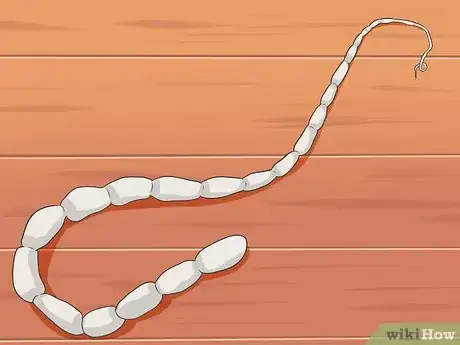
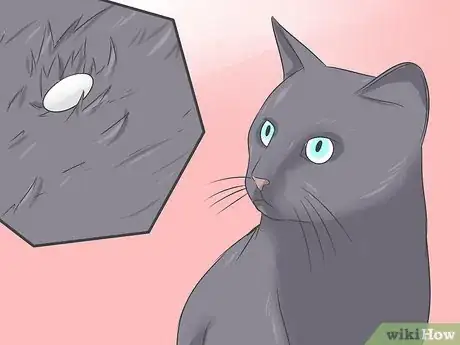

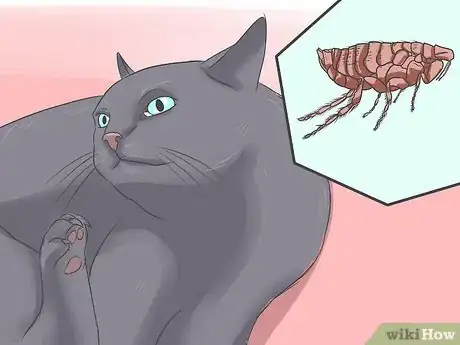
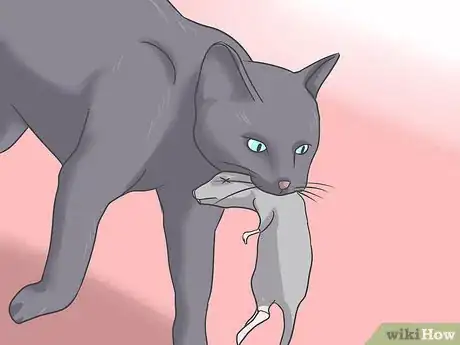

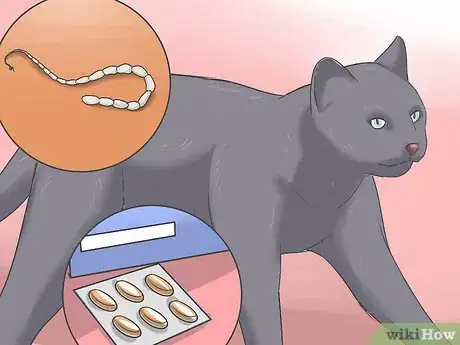
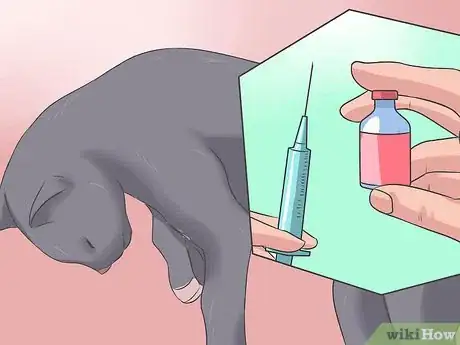
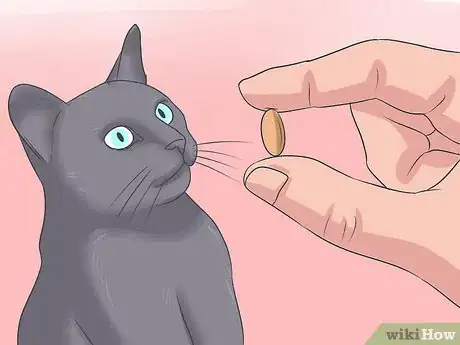
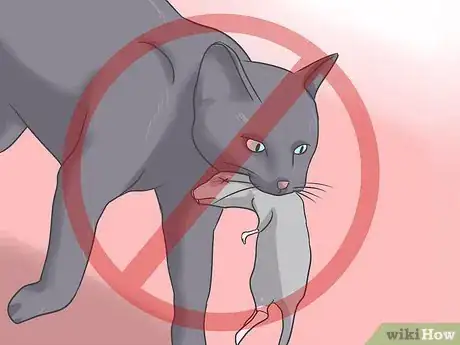

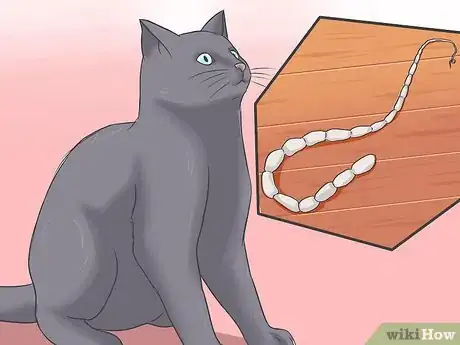
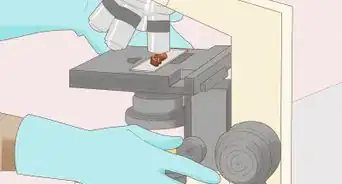

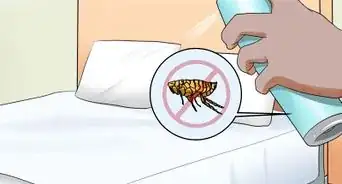
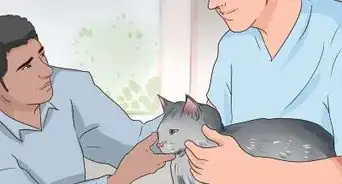
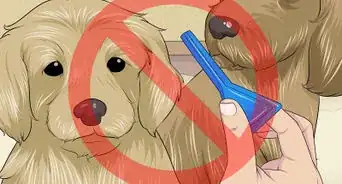

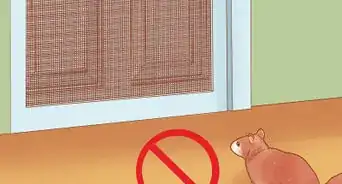





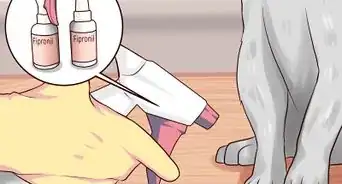
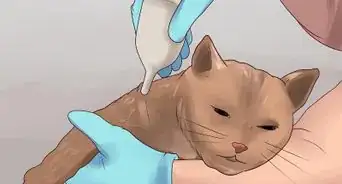












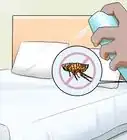




































Medical Disclaimer
The content of this article is not intended to be a substitute for professional medical advice, examination, diagnosis, or treatment. You should always contact your doctor or other qualified healthcare professional before starting, changing, or stopping any kind of health treatment.
Read More...